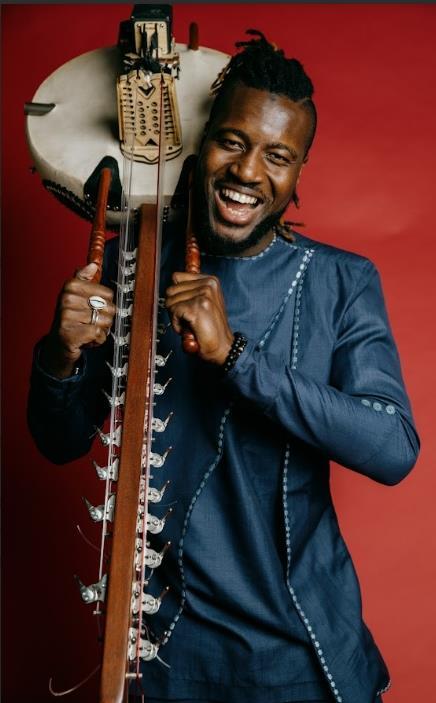Ahead of a performance at Kings Place on 23 November, Suntou Susso gives an introduction to this West African plucked stringed instrument

Discover more Featured Stories like this in The Strad Playing Hub
What is a kora? Could you describe the instrument?
Kora is a harp-lute originating from West Africa, namely Gambia. It then spread to Senegal, Mali and Guinea. It is a unique, rare and healing instrument intimately connected to the Griots of the Mandinka culture. Being an instrument of the Griots, it passed down from elders to younger generations and it has been that way since the 13th Century.
It is a very beautiful instrument. The body is made out of calabash (pumpkin) that has been cut in half, carved out and dried. It is covered with stretched cow skin and pinned into place with decoratively positioned silver pins. The neck, the handles and the bridge are made from the wood of the mahogany tree. There are 22 strings and they are simply made out of fishing line! As you can imagine, tuning 22 strings can take a while!
How do you play it?
Kora is played with both hands, you use the thumb and index finger of each hand. The left thumb continually plays the bass line, the right thumb will play the melody and the two index fingers add improvisation over the top. During my live performances, I will often do a short demonstration to explain how the kora is played because there are always people in the crowd who have never seen or heard the instrument before. People are always very curious about the kora and enjoy receiving the demonstration.
How do you feel the sound of the kora contributes to the cello, double bass and violin in your programme with Soundings from the Planet?
I think it adds a beautiful tone and colour. Not only does it keep the bass-line throughout the pieces but it also provides beautiful melodies.
As an instrument that is traditional to West Africa and less known here in the UK, it adds an interesting and unique sound for a lot of people in the audience when it sits alongside the much more widely recognised instruments such as cello, double bass and violin.
Watch the Kora in action here, at this performance from Soundscapes of the Planet Set 1, presented by NW Live Arts at the Arts Depot Finchley:
Soundings From the Planet
Thursday 23 November, 8pm
Hall Two, Kings Place, London
Musicians and storytellers come together to consider the impact of climate change in an evocative programme of words and music. NW Live Arts’ dynamic musicians explore the sounds of our planet – music of the air, sea, sky, forests and landscapes – in a programme of Bach, Bartok and Messiaen, free improvisation, new composition and music from West Africa and South Korea. Sharing the stage, creative storytellers from the local community join the musical conversation asking us to value our connections to nature and find a way to let the planet restore.
Find out more: https://www.kingsplace.co.uk/whats-on/contemporary/soundings-from-the-planet/
Read: ‘Like a magnifying glass was put on my playing’: Tuulia Hero on her 1707 Stradivari violin
Read: Malawian one-man band creates and performs on his own unique one-stringed instrument
Discover more Featured Stories like this in The Strad Playing Hub
The number one source for playing and teaching books, guides, CDs, calendars and back issues of the magazine.
In The Best of Technique you’ll discover the top playing tips of the world’s leading string players and teachers. It’s packed full of exercises for students, plus examples from the standard repertoire to show you how to integrate the technique into your playing.
The Strad’s Masterclass series brings together the finest string players with some of the greatest string works ever written. Always one of our most popular sections, Masterclass has been an invaluable aid to aspiring soloists, chamber musicians and string teachers since the 1990s.
American collector David L. Fulton amassed one of the 20th century’s finest collections of stringed instruments. This year’s calendar pays tribute to some of these priceless treasures, including Yehudi Menuhin’s celebrated ‘Lord Wilton’ Guarneri, the Carlo Bergonzi once played by Fritz Kreisler, and four instruments by Antonio Stradivari.













































No comments yet